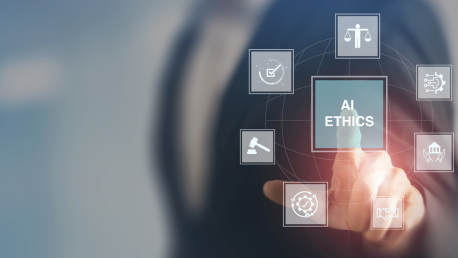Solomon Philip is Shift Technology’s Head of Market Intelligence
In a recent Shift Market Forces blog post we addressed the impact economic uncertainty, stemming from myriad sources, has on an insurer’s bottom line. Although these macroeconomic issues are affecting the insurance industry globally, our initial insights were predominantly focused on the North American market. But what’s happening in Europe, especially as it relates to the market for repair parts? Why should insurers care? And how can they harness the power of artificial intelligence (AI) to improve the bottom line?
Higher complexity = higher costs
Insurers operating in Europe are facing a variety of converging forces that are reshaping the repair parts market, and thus, driving up insurers' cost of doing business. Passenger vehicles continue to become more complex as Advanced Driver-Assistance Systems (ADAS) and even Autonomous Driving (AD) capabilities are increasingly included as standard features. And when motor vehicles equipped with these features are involved in an accident, repairs simply cost more. For vehicles with Level 2+ lidar capabilities, industry estimates put the increased cost to repair at between €1,300 and €1,800 in parts alone. Naturally, it is even more for cars with Level 3 (L3) and Level 4 (L4) options. And the cost of parts does not capture the increased service hours required to properly calibrate these technologies for proper operation.
Regional conflicts, new regulations and the supply chain
There is no question that the Ukraine conflict has caused logistical and supply chain problems and parts shortages of critical vehicle components throughout Europe. In many cases this is due to Eastern European countries being major auto parts suppliers to car manufacturers based in Western Europe. Market consolidation, represented by approximately 65 M&A deals since 2005, continues to shrink the number of suppliers. Taken together these factors are pushing the price of parts ever higher.
As important, the EU has plans to open up the parts market by removing limitations on manufacturers, allowing them to work with any OEMs they wish. When no longer tied to specific OEMs, manufacturers are free to price their products independent of artificially established ranges created through government regulations. This will inevitably lead to even higher prices for replacement parts.
Beyond the price of parts
It is critical to remember that the total cost of motor claims is not only about the price of parts. Shortages can increase repair times because a required part may not be readily available or it takes longer than usual to arrive at the repair shop. In such an environment, it is reasonable to anticipate an extended claims cycle. Not only does this prolong indemnity payments and frustrate customers, but also rental cars are needed for longer durations, adding to an insurer’s total costs. In fact, certain parts of Europe saw a nearly 200% increase in rental car costs from CY20 to CY22.
What can insurers do?
The good news in this climate of higher prices and elongated claims cycles is that there are a number of strategies insurers can implement to minimise the impact of these factors, many of them based on the power of AI. As previously addressed, today’s vehicles are packed with complex telematics systems capable of recording nearly every aspect of a driver's behaviour through sensors, cameras, and LIDAR technologies. Telematics data can be used by insurers to provide the additional perspectives, above and beyond the traditionally available sources of accident data, such as police reports and witness statements, needed to reconstruct the event of an accident. Telematics data, when combined with the latest AI-powered claims assessment technologies, can enhance fraud detection models improving accuracy in determining liability and the extent of damage resulting from the accident.
Further, insurers can leverage AI to shorten the period from first notice of loss (FNOL) to settlement. The ability to accurately, confidently and fairly identify claims suitable for straight-through processing can reduce claims costs by accelerating the adjudication of claims. Deciding to settle a potentially expensive claim can save insurers hundreds of thousands of dollars annually. This concept can also be applied to those claims that require human intervention. Automatically identifying, segmenting, and triaging complex claims to the most experienced handlers helps ensure the right claims professional - the one who can close the claim most efficiently - is assigned to the task. An AI-enabled claims decision engine is specifically designed to look at the type of claim, its complexity, and risk to an insurer to quickly find the best claims handler to work on it, and assign the claim to them automatically.
Finally, AI can help insurers identify and create a network of “trusted providers” that have demonstrated a history of adopting best practices resulting in quality work, optimised prices, and efficient repair times. AI can also help identify shops known for advocating the use of “Green Parts,” those being high-quality used or recycled parts on par with new but that cost considerably less. Once this network is established, it becomes easier to recommend these in-network repairers to customers which can result in significantly lower claims costs. Many insurers report that keeping customers in-network can result in savings of 20% or more.
Conclusion
Increasingly, insurers are turning to AI-based solutions to improve processes, and thus the bottom line. AI has been shown to accurately determine the extent of damage and catch exaggeration of claims. AI can help insurers recognize patterns indicative of claims with a high propensity for litigation or that may involve long-drawn-out medical treatments and flag them for special attention by the most senior claims handlers. Insurers can use AI to not only more quickly identify clams with subrogation opportunities but also help estimate potential recovery amounts and accurately predict the probability of recovery. Applying AI to claims, from FNOL to settlement, is simply the best way to maximise the process and increase the bottom line.
Special thanks to Emmanouil Aleiferis, Grady Behrens, Joanne Butler, Gareth Evans, and Tom Harrington for their invaluable contributions to this blog post.
For more information about how Shift can help you adopt AI to meet the economic challenges facing the insurance industry – contact us today


